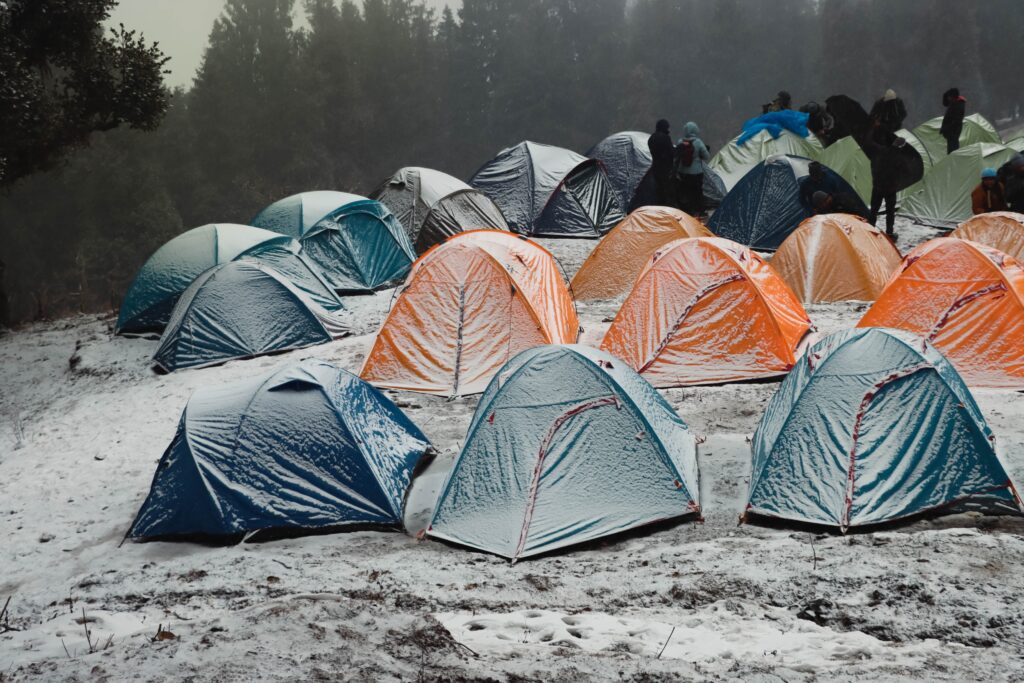
For people who are not used to the cold and the darkness, winter camping can seem like a frightening proposition, but it doesn’t have to be. Any climate, including winter, may be a comfortable place to camp with the right planning and preparation. Learn all you need to know about winter camping from determining where and when to camp to selecting the appropriate equipment to stay warm and dry by referring to this guide.
Winter camping doesn’t have to be a terrifying experience for folks who aren’t acclimated to the cold and the darkness. If you plan and prepare well, you can camp comfortably in any season, including the winter. Learn all you need to know about winter camping from determining where and when to camp to selecting the appropriate equipment to stay warm and dry by referring to this guide.
Choosing Up The Right Gears
You don’t want to go broke in the process of getting ready for your winter camping trip. Here are some of our favourite items of camping equipment that each camper has to have in order to make it through a trip in the cold.
- Insulated sleeping gear is essential to keep you warm and comfortable throughout the night. This includes a high-quality sleeping bag made for cold climates and an insulated sleeping pad.
- Clothing in Layers: Dress in layers to control your body’s temperature. Key elements include an outer layer that is waterproof, an insulating middle layer, and a base layer that wicks moisture away.
- Winter Tent: Spend your money on a four-season tent that can endure snowfall and offer sufficient insulation.
- Choose a cooker that operates effectively in cold weather for your cooking equipment. For staying cosy, warm meals and hot beverages are a need.
- Skis or Snowshoes: Depending on the terrain, you can more easily move through deep snow on skis or snowshoes.
Finding the Ideal Location
When choosing a winter camping location, research is essential. Search for websites that provide accessibility and security. The best possibilities are national parks, state forests, and dedicated camping locations with winter amenities. Take into account elements like the distance to trails, water sources, and the degree of seclusion you desire.
Safety & Priority First
- Check the weather: Keep up with storm predictions and current weather conditions. Be ready to change your plans if the situation becomes dangerous.
- Avalanche Awareness: If you’re camping in an avalanche-prone area, familiarise yourself with avalanche safety measures and bring the necessary rescue supplies.
- Navigational Skills: Disorienting winter landscapes can occur. Before leaving, become familiar with map and compass navigation.
- Emergency Communication: Make sure you have a fully charged phone and a portable charger. For use in remote areas, think about purchasing a satellite communicator.
Understanding Camp Setup Techniques
- Finding a Campsite: Look for a flat area away from any potential dangers like avalanche zones or overhanging trees.
- Placement of Tent: Make a barrier to stop the chilly winds and remove any snow from the area where you intend to erect your tent.
- Snow Anchors: To secure your tent in snow-covered ground, use snow pegs or anchors.
Keeping Warm and Comfy
- Dress in moisture-wicking materials to keep sweat away from your body by layering appropriately. Cotton should be avoided since it traps moisture and can cause hypothermia.
- Stay Dry: As soon as you stop moving, change into dry clothing. Rapid heat loss can be caused by wet clothing.
- Nutrition and Hydration: To keep warm, drink plenty of water and feed your body with high-energy foods.
Accepting Winter Magic
- Enjoy the splendour of the snowy surroundings while roasting marshmallows around a campfire that is crackling.
- Clear sky are available during the winter months for stargazing. To identify constellations, bring a star chart or a sky-gazing app.
- Capture the Moments: The serene surroundings provide wonderful photo opportunities. Remember to cover your camera to keep it warm.
Remove All Traces
The beauty of natural environments must be preserved through responsible winter camping. Pack out any trash, reduce camping impact, and respect wildlife by staying a safe distance.
Pros & Cons on Winter Camping
Our Recommendations
- Coleman Sundome Tent
- Unisex Waterproof Socks
- Wet Wipes For Camping
- Stanley Camp Cook Set
- OlimpiaFit Quick Dry Towel
- Portable Waterproof Sleeping Bag
Conclusion
Winter camping is a wonderful approach to develop a closer relationship with nature. The amazing pleasures of beautiful snowscapes, starry evenings, and the profound tranquillity of the environment more than offset the difficulties it poses. You can go on winter camping excursions that provide life-long experiences by making the correct equipment purchases, learning necessary skills, and placing safety first. So wrap yourself warmly, venture outside into the winter wonderland, and see the enchantment of winter camping come to life in front of you. Also, you can go through our blogs The Best Camping Tent in United States, Camping Shoes Recommendation, and Ultimate Survival Kit For Camping

